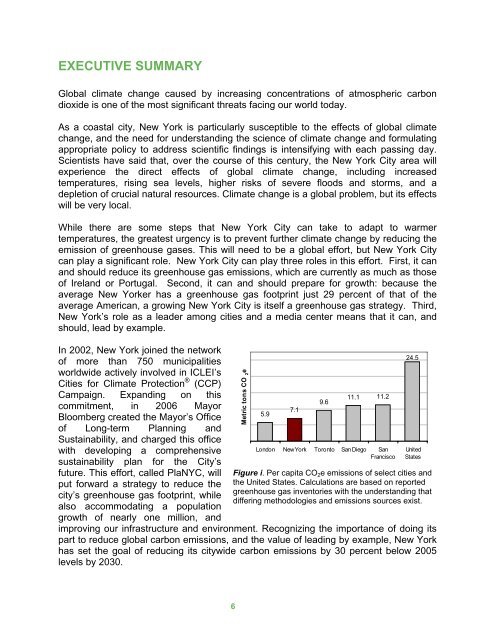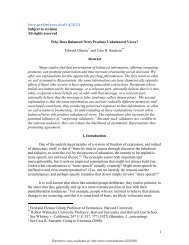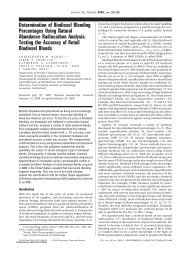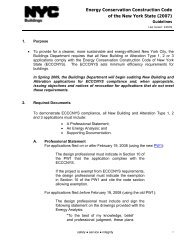GREENHOUSE GAS EMISSIONS - The Sallan Foundation
GREENHOUSE GAS EMISSIONS - The Sallan Foundation
GREENHOUSE GAS EMISSIONS - The Sallan Foundation
Create successful ePaper yourself
Turn your PDF publications into a flip-book with our unique Google optimized e-Paper software.
EXECUTIVE SUMMARY<br />
Global climate change caused by increasing concentrations of atmospheric carbon<br />
dioxide is one of the most significant threats facing our world today.<br />
As a coastal city, New York is particularly susceptible to the effects of global climate<br />
change, and the need for understanding the science of climate change and formulating<br />
appropriate policy to address scientific findings is intensifying with each passing day.<br />
Scientists have said that, over the course of this century, the New York City area will<br />
experience the direct effects of global climate change, including increased<br />
temperatures, rising sea levels, higher risks of severe floods and storms, and a<br />
depletion of crucial natural resources. Climate change is a global problem, but its effects<br />
will be very local.<br />
While there are some steps that New York City can take to adapt to warmer<br />
temperatures, the greatest urgency is to prevent further climate change by reducing the<br />
emission of greenhouse gases. This will need to be a global effort, but New York City<br />
can play a significant role. New York City can play three roles in this effort. First, it can<br />
and should reduce its greenhouse gas emissions, which are currently as much as those<br />
of Ireland or Portugal. Second, it can and should prepare for growth: because the<br />
average New Yorker has a greenhouse gas footprint just 29 percent of that of the<br />
average American, a growing New York City is itself a greenhouse gas strategy. Third,<br />
New York’s role as a leader among cities and a media center means that it can, and<br />
should, lead by example.<br />
In 2002, New York joined the network<br />
of more than 750 municipalities<br />
worldwide actively involved in ICLEI’s<br />
Cities for Climate Protection ® (CCP)<br />
Campaign. Expanding on this<br />
commitment, in 2006 Mayor<br />
Bloomberg created the Mayor’s Office<br />
of Long-term Planning and<br />
Sustainability, and charged this office<br />
with developing a comprehensive<br />
sustainability plan for the City’s<br />
future. This effort, called PlaNYC, will<br />
put forward a strategy to reduce the<br />
city’s greenhouse gas footprint, while<br />
also accommodating a population<br />
growth of nearly one million, and<br />
Metric tons CO 2<br />
e<br />
Figure i. Per capita CO 2 e emissions of select cities and<br />
the United States. Calculations are based on reported<br />
greenhouse gas inventories with the understanding that<br />
differing methodologies and emissions sources exist.<br />
improving our infrastructure and environment. Recognizing the importance of doing its<br />
part to reduce global carbon emissions, and the value of leading by example, New York<br />
has set the goal of reducing its citywide carbon emissions by 30 percent below 2005<br />
levels by 2030.<br />
5.9<br />
7.1<br />
9.6<br />
11.1 11.2<br />
London New York Toronto San Diego San<br />
Francisco<br />
24.5<br />
United<br />
States<br />
6







